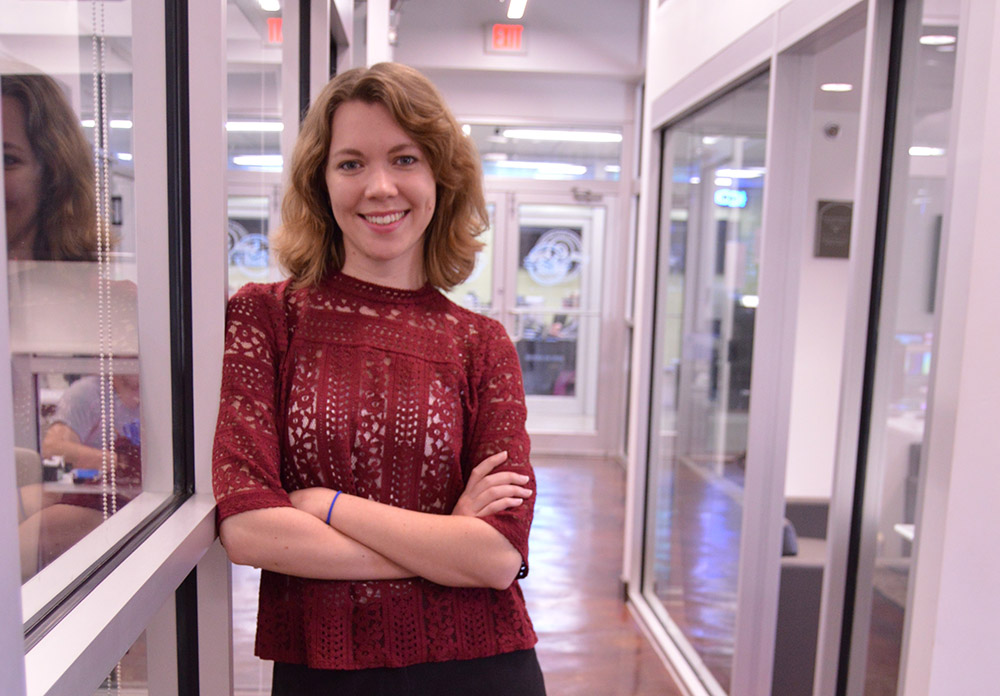Story by: Tom Lammert, Lecturer at MSU Department of English
A few years ago, it wouldn’t have been wise to let Megan Wiegmann near an aquarium.
When the 23-year-old started experimenting with raising fish, she overfed them. According to Megan, doing so “essentially drowned [the fish] in their own waste.” The untimely deaths of her beloved gill-bearing buddies led her to research methods that would help her avoid a second heartbreak, and during this search she stumbled across information about hydroponic and aquaponic systems.
Hydroponics (growing plants in nutrient-rich, water-based solutions) is already a popular method companies employ to cultivate large quantities of produce, whereas aquaponics combines hydroponics with aquaculture (raising aquatic creatures in a tank). Megan describes aquaponics as a “mutually beneficial system” in which the waste of the snails or fish or crabs fertilizes the produce growing atop the tank.
Sure, she refers to the death of her sea creatures as “tragic,” but this incident and her subsequent research spawned her idea to create an aquaponic system designed for individual consumers. Other systems exist, but her start-up company – H2grOw – aims to create aquaponic systems that are cheap, efficient, and versatile. For instance, an H2grOw aquaponic system can fit on any aquarium that is ten to fifty gallons, and multiple systems can be linked to one another to increase efficiency and productivity.
Unfortunately, Megan had no idea how to get her business started. She spent her freshman, sophomore, and junior years studying chemical engineering, tutoring, and killing time by being involved in extracurricular activities. It wasn’t until she took Engineering Management during the Fall 2017 semester that Megan discovered how she could add “Owner of an LLC” to her list of accomplishments. During an Engineering Management lecture about the development of corporations, one of her peers mentioned how working with the E-Center could end with obtaining an LLC.
Megan finally knew where to go and who to talk to about kickstarting H2grOw.
That same day Megan stopped by the E-Center and spoke with one of the student workers to make an appointment with Eric Hill, the Director of Entrepreneurship, the following day. The meeting with Eric went according to plan, and afterwards she met other students and mentors who encouraged her with “really helpful advice, inspiring visions, and professional attitudes.” Soon after her initial trip to the E-Center, Megan produced a functioning prototype of the aquaponic system that had seemed an unattainable abstraction. She gives credit to the E-Center for helping her succeed, noting the apt name of the VentureCatalyst Program: “It really [was] the catalyst in my venture process.”
Now that H2grOw serves as an integral part of the program, and the company is well on its way to achieving its ultimate goal: producing food for populaces in arid, underserved regions of the world. Megan wants other entrepreneurs to realize their dreams, too, so she invites them to the E-Center to “share [their] ideas, make lots of connections, and have fun!”
Megan’s experience ensures fish will remain safe and swimming and – thanks to H2grOw’s aquaponic systems – fertilizing.

